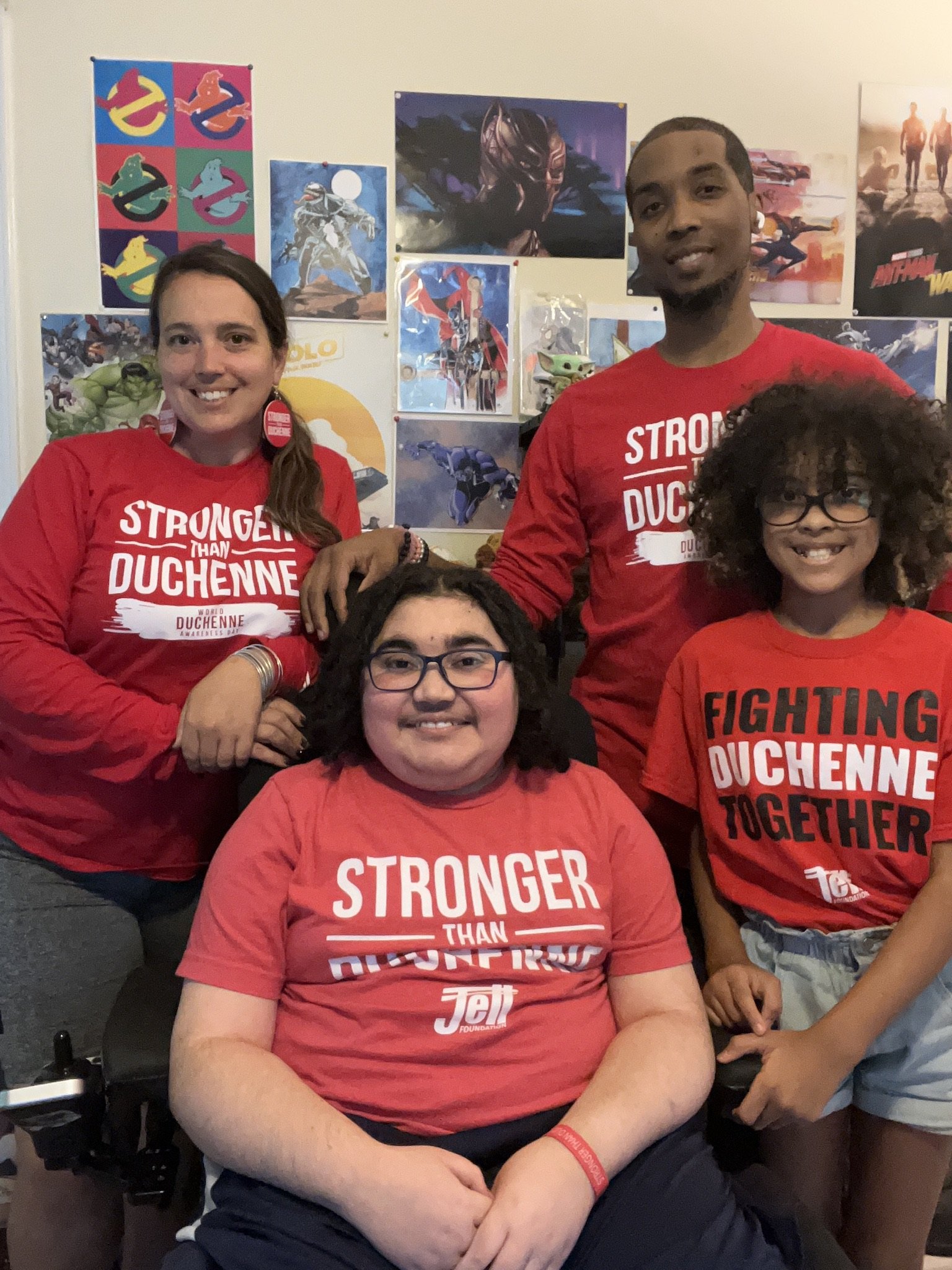The Duchenne Journey: How One Asheville Mom Navigates Having a Child with Duchenne Muscular Dystrophy
By rosa linda fallon
Jessica Campbell’s son, Javon, was four years old when she started to notice something was not quite right about him. While attending one of Javon’s soccer games, she noticed he had unusually large calf muscles in comparison to the other children his age, and he was barely able to keep up with the rest of the team. “I asked the doctor about it,” Jessica says. “But they dismissed it, saying he was just a late bloomer.” Everything else Javon did was on schedule as far as milestones were concerned. He started kindergarten like any other normal child. And while no one ever said anything to her, Jessica couldn’t help but notice he was still just as slow, physically. During the summer between Javon’s first and second grade school years, the family traveled up to Indiana for a family member’s funeral. “My cousin said, ‘Wow, he’s slow.’,” Jessica remembers. Finally, she and her partner began to conduct their own research on Google. They came across the Gowers’ Sign, a maneuver where a child assumes the hands-and-knees position and then climbs to a standing position by ‘walking’ his hands progressively up his legs and thighs, something they had observed Javon doing consistently. Jessica wrote a letter to the pediatrician voicing her concerns, and they scheduled a blood test. The results came back showing a trigger for Duchenne muscular dystrophy. The doctor referred them to Duke Medical Center, where doctors confirmed Javon’s diagnosis.
“I remember my stomach dropping. Anticipatory grief kicks in right away,” Jessica says, recalling how she felt when they received his diagnosis. “Anger. I think I was angry for a good two years. Processing all of that, asking, ‘Why wasn't he diagnosed earlier?’ Then part of me was like ‘Well, we could’ve pushed harder,’ but we were just listening to what the doctor said.” It is not uncommon for many patients to go undiagnosed due to the lack of awareness and education surrounding muscular dystrophy.
Duchenne muscular dystrophy (DMD) is a genetic disorder that causes progressive muscle degeneration and weakness due to the alterations of a protein called dystrophin, which helps keep muscles intact. DMD symptom onset occurs in early childhood, typically between ages 2 and 3. The disease mainly affects boys, and in rare cases, it can also affect girls. DMD was first described by French neurologist Guillaume Benjamin Amand Duchenne in the 1860s. However, little was known about the cause of muscular dystrophy until the 1980s. The disease is linked to the X chromosome and is typically passed on by the mother. In Javon’s case, however, his diagnosis was a result of a spontaneous mutation.
At the time Javon was diagnosed, life expectancy was between 16 and 20 years. Thanks to cardiac and respiratory care advances in healthcare, individuals with DMD are living longer. Many young men with DMD now attend college, hold carriers, get married, and have children.
While medical advances have helped to improve quality of life for those with DMD, overall awareness and advice on how to navigate the disease is not readily available. After Javon’s diagnosis, there was no follow-up from a social worker, and no information was provided on how to navigate next steps. “Nobody told us anything after that,” Jessica says. “We didn’t know where to go.” She eventually began to do more research on her own, this time, to find support. She discovered there is an entire community of people across the country who have also been affected by DMD. “There are programs and other nonprofits that are out there that can help lead the way and carve the path for you,” she says. “I now have this amazing group of Duchenne moms that I lean into.” Jessica is now an ambassador for the Jett Foundation, a nonprofit organization that empowers people and families who are impacted by DMD through programming and educational opportunities. She is also involved with the nonprofit Parent Project Muscular Dystrophy that fights to end Duchenne by raising awareness, providing resources, and accelerating research.
As for Javon’s medical care, the family travels to Nationwide Children’s Hospital once a year to see Dr. Flanigan and his team, who specialize in neuromuscular disorders. Javon is also participating in a clinical trial for which the family travels from Asheville to Atlanta every two months. Most times, they make a mini vacation out of each trip – going out to eat together and watching movies in the hotel room.
Javon fully lost his ability to walk between ages 10 and 11, but overall, he lives a normal, happy life like any other child. “He’s good,” Jessica says of her son. “He’s verbal. He loves to play games; he loves all things Marvel.” While Jessica admits she and everyone in the Duchenne community surely want a cure, her priority is to help Javon live his best life. “Our focus is on quality of life, and that’s not just for Javon, that’s for all of us within our family,” she shares. “I think this journey has allowed me to say that confidently.” Jessica homeschools Javon and her second child, Janessa. “It just fits in with our overall schedule,” she explains of homeschooling, adding that Javon has six medical appointments next month. With a strong support system behind them and much to look forward to, Jessica is optimistic about Javon’s future, and she doesn’t take anything for granted. “You appreciate things, and you truly don’t sweat the small things.”
To learn more about the Jett Foundation, visit www.jettfoundation.org
To learn more about Parent Project Muscular Dystrophy, visit www.parentprojectmd.org


